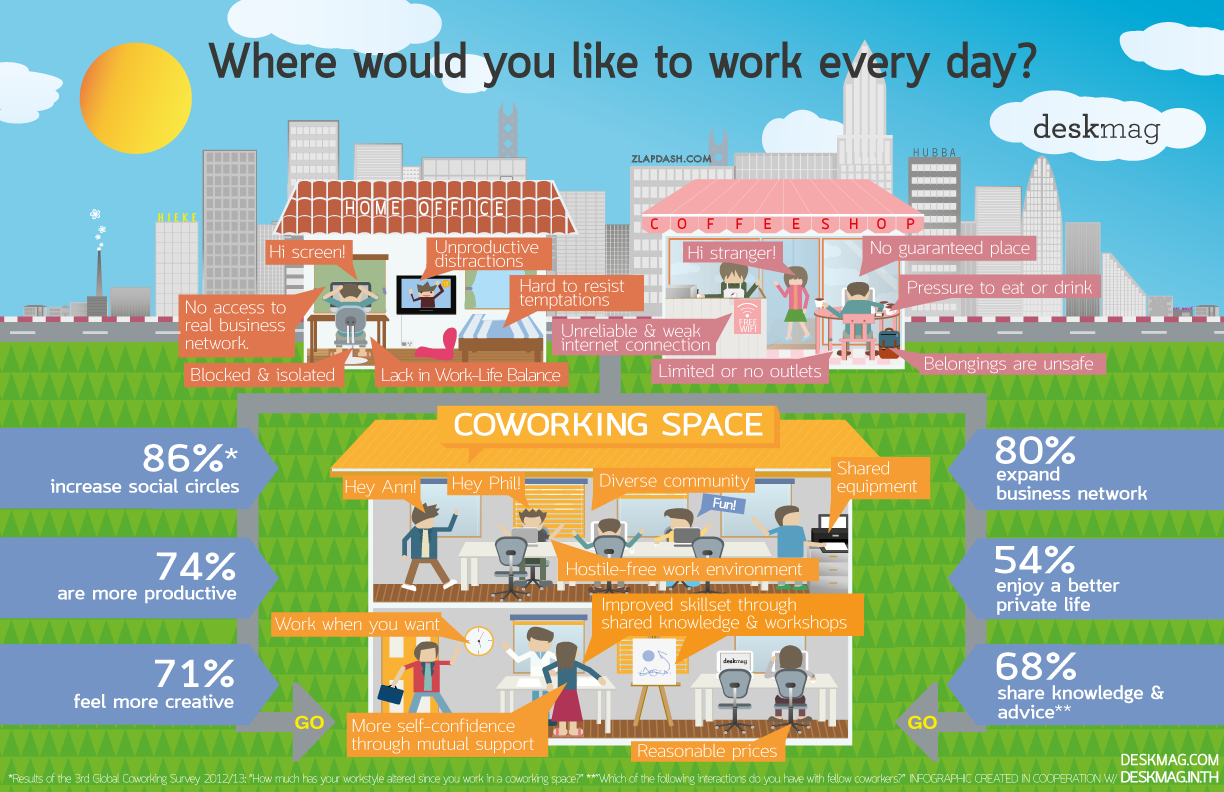Co-working can still work
The saga revolving around WeWork’s rapid descent has all the makings of a Darren Aronofsky film interpretation of the rise and fall of a modern company. A recent report predicts the end of the road for the company. The initial dream of co-working drew parallels to two different businesses. First, we saw similarities mimicking the popularity of bubble tea (or boba tea) that revealed our unhealthy addiction to sugary drinks and tapioca pearls with stalls popping up all over the place. Secondly, WeWork was poised to be the pack leader in the co-working movement, like how Bitcoin led the prolific rise of cryptocurrency and spawned altcoins which followed in their steps.
WeWork’s story stands as a cautionary tale of the startup that fell way short of going to the moon, where sentiments that co-working as an industry is a fad, and the business model a pretender at best. As much as the next phase of the co-working story is that of a crucible, I believe that this model does work.
Between the iterations from open offices to remote working, both at opposing ends of the spectrum for human interaction and engagement at the workplace. We have seen the pros and cons with mixed results.
I feel that co-working is by far, the most current, and effective evolution of the modern-day workplace, a setup that manages to strike that elusive balance for productivity and satisfaction at work, as well as provide the perks of community and social interactions between individuals and different companies.
For co-working to emerge at the other end of this period of trial, the companies that want to stay relevant in the space need to work together with their tenants to examine co-working for what it really is and dispel all irrelevant tags and allusions to the business.
I like co-working, and I want to see the industry succeed, these are some of the back-to-basic points that drew me to co-working in the first place, that I hope will help co-working operators bring back the love.

A portrayal years ago when things were simpler
1) Location, location, location
Accessibility to and from your co-working space is a big factor, keep in mind as well that your co-working space and the surrounding area that it is in share a symbiotic relationship. Knowing the different amenities and services that are available in the vicinity can give you an idea of the services and conveniences your co-working members have access to.
2) Know the industries your location leans towards
Certain locations lend themselves easier to certain industries, understanding the beat and vibe of your location allows you to know which businesses will gravitate towards your space. Having a base pool of industries to focus on gives you a better view of other industries that you can plan to reach out to that could help with the existing space and community.
3) Community starts with you
Co-working is a people-centric business, your team has to balance running the show and being at the forefront. From interacting with your members, dealing with their issues and concerns, and helping make the co-working space as conducive and as welcoming as it can be to draw in the right crowd. Take a look at this guide to building a co-working team. I’ve had the experience where I was visiting a friend at a co-working space as a guest for a meeting and told to leave once my meeting was over, as opposed to being offered a space to work for a day rate. Interactions with co-working staff can be deal breakers for potential members.
4) Reward engaging members
As you build your community, there will be some members who you can identify as social, community-oriented members, help them, engage them, play an active role in aiding their business and personal goals. The member community leader will be one with the grapevine and give you better insight into what your co-working space might need more of, and what events and activities would be best suited for your space. Talk to them, and you’ll get more honest insights than pushing out a survey with a frozen yogurt voucher.

5) Eventful experiences
Knowing the needs of your members, planning events that would interest them, and their friends and contacts at the co-working space is a good step to get two things done. Putting a theme and context to an otherwise cut and dry “networking event”, as well as start putting your space as a name synonymous with bringing together quality speakers, and a gathering spot for thought leaders.
6) Member to ambassadors
Going beyond the rewards of events catered to better suit their needs, make them an active part of your campaign, incentivise their involvement. Members who love the space and are community leaders among your members can be your best spokespeople and ambassadors, attracting more of the people you want in your space.
7) Adjust to the range of members you have
Understand that at times the co-working space can be in flux. As much as it looks like marketing plans for the space should revolve heavier on tenants that either hold more space, or have longer tenancies do not isolate members that are on monthly, weekly, or even daily engagements with your space. Remember that every time a member steps into your co-working space is a chance to cement your space as the space to be.
8) Less like Bitcoin, more like bubble tea
Post-WeWork the notion that one space can be everything to everybody has been dispelled and left in tatters. The next wave of co-working won’t be led by a singular entity that tries to be everything to everybody. The future will be like bubble tea - everyone knows it, everyone has their preferred flavour, and they know which stall does it best.
Co-working spaces have the potential to be everything to the right people, the board has been disrupted and reset, and the race starts anew.
